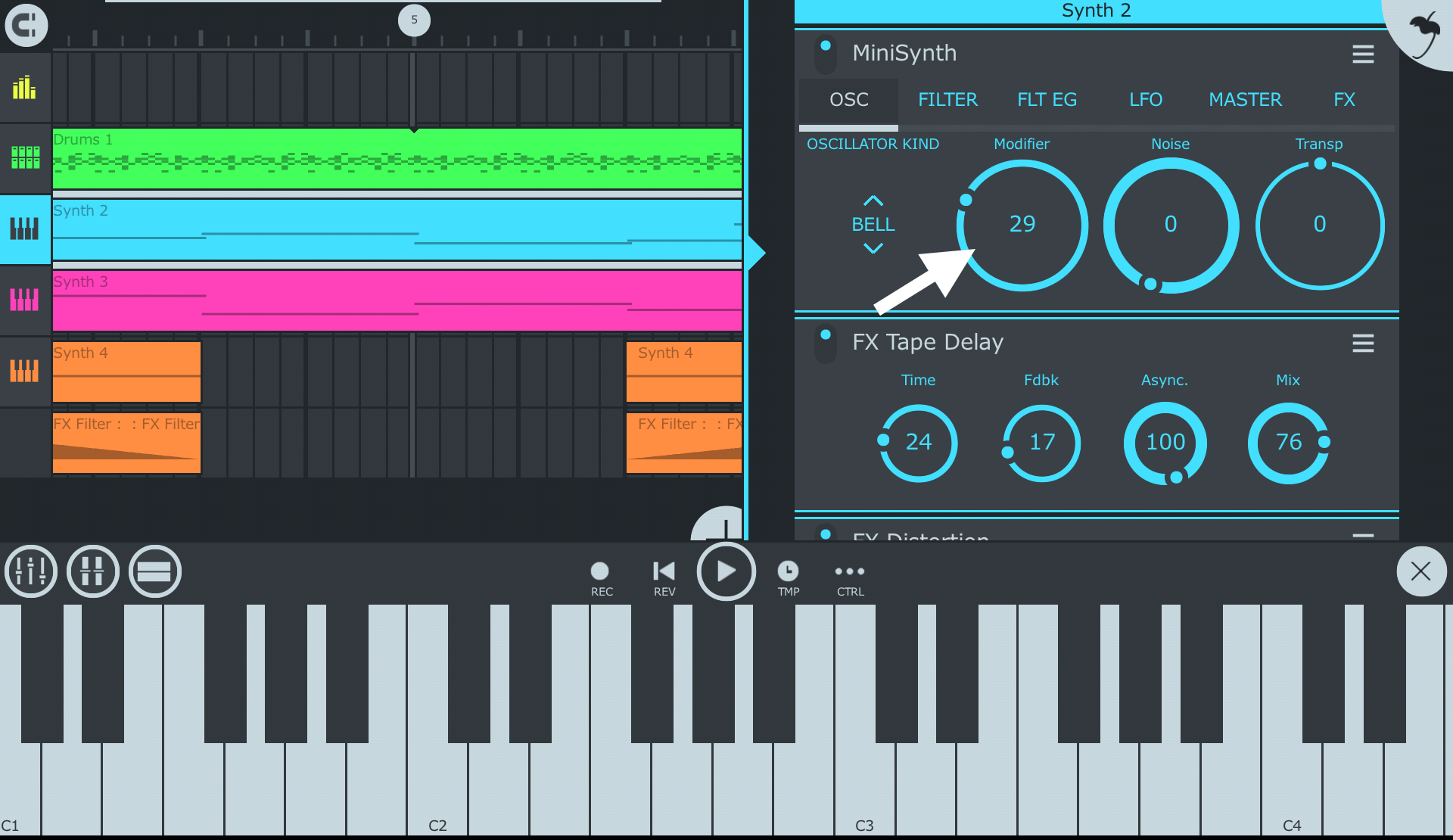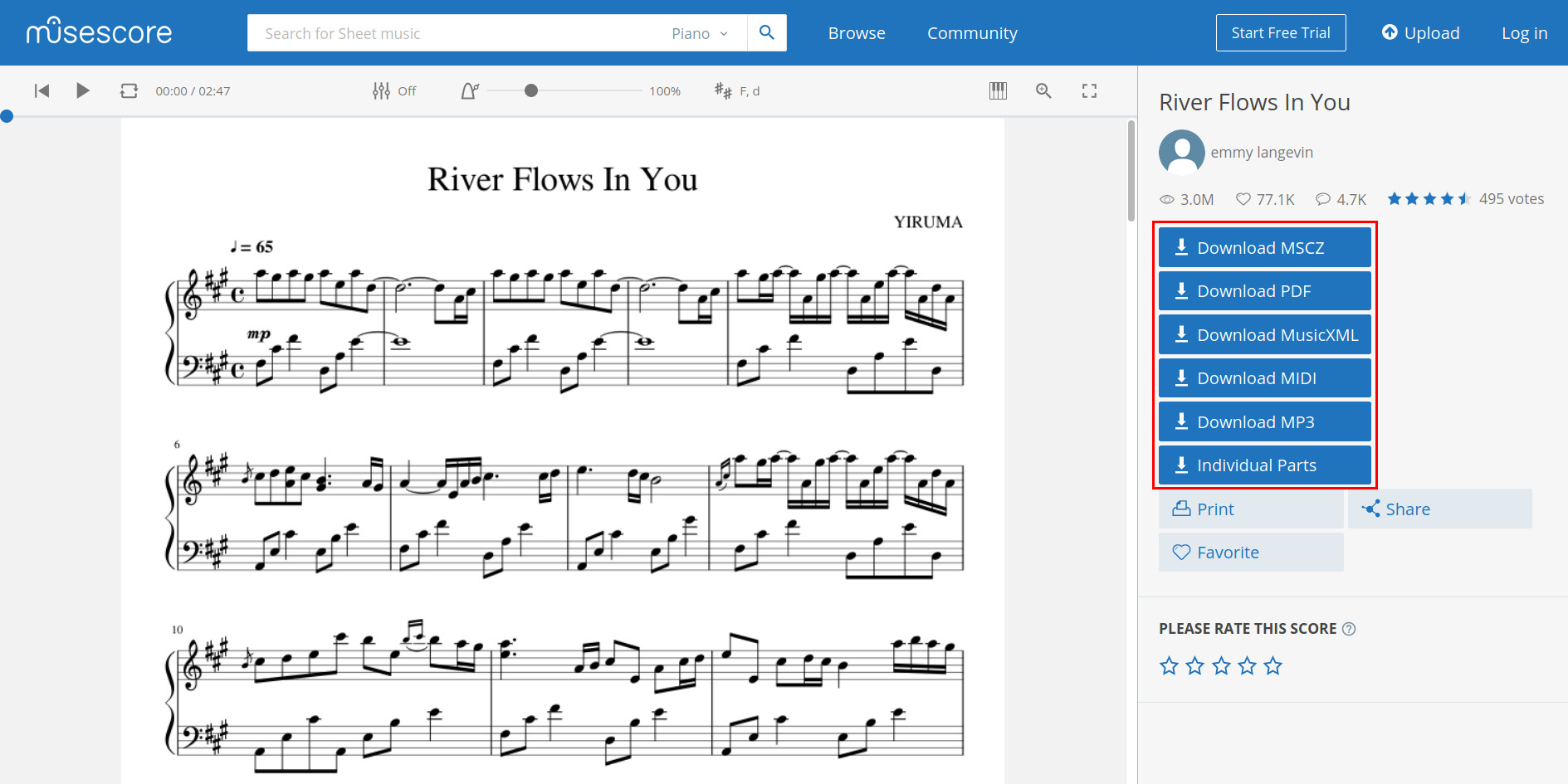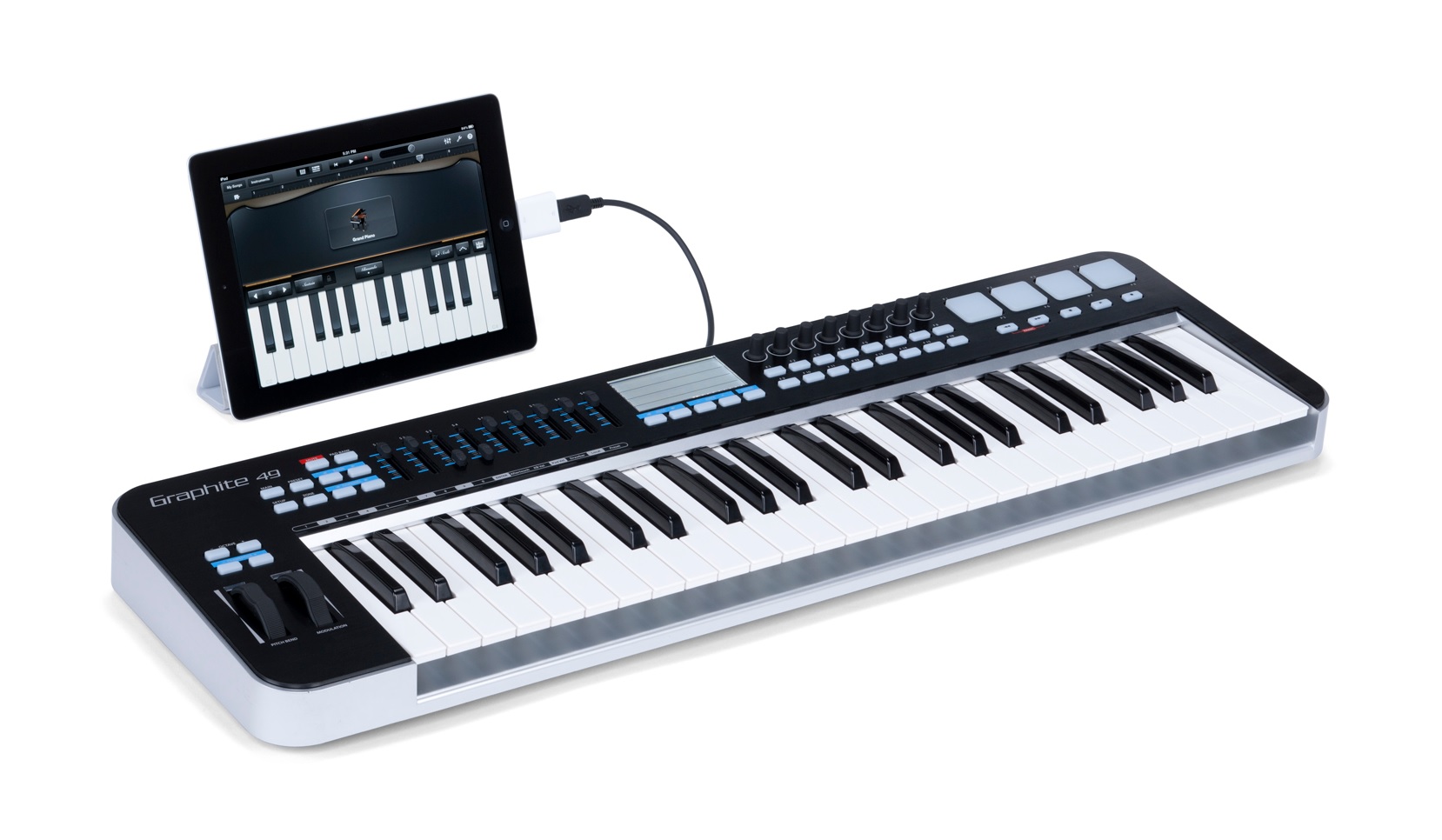Introduction
The world of music is vast and varied, with countless genres and styles to explore. Whether you are a seasoned musician or an avid music lover, you may have come across a type of audio file called a MIDI file. MIDI, short for Musical Instrument Digital Interface, is a type of file format that contains musical data, such as notes, rhythms, and instructions for various instruments.
Downloading MIDI files can open up a whole new world of music for you. These files allow you to access a wide range of songs, compositions, and soundtracks created by talented musicians and producers. Whether you are looking for popular songs, classical compositions, video game soundtracks, or even backing tracks for your own musical projects, MIDI files provide a versatile and convenient option.
In this article, we will explore various methods for downloading MIDI files. From websites dedicated to MIDI files to online libraries and databases, there are several places where you can find and download MIDI files with ease. We will walk you through the process step by step, ensuring that you have the necessary information to embark on your MIDI file downloading journey.
Before we delve into the different methods of downloading MIDI files, let’s take a look at where you can find these files and the benefits they offer. Whether you are a musician seeking inspiration or a music enthusiast expanding your collection, MIDI files can be a valuable resource for discovering and enjoying music in a unique way.
What are MIDI Files?
MIDI files are a type of digital file format that contains musical information. Unlike audio files, which capture the actual sound wave of a performance, MIDI files store data about the music, such as the notes, rhythms, and other musical instructions. This data can be interpreted and played back by MIDI-compatible devices and software.
One of the main advantages of MIDI files is their flexibility. They can be easily edited and manipulated, allowing musicians and producers to modify and rearrange the musical elements to suit their needs. This makes MIDI files a popular choice for creating and sharing music electronically.
MIDI files are commonly used in various contexts. They are widely employed in music production, allowing composers and producers to create and arrange music using MIDI-compatible software and devices. MIDI files are also used in live performances, where they can be played back through MIDI instruments or software to recreate the sound of a full band or orchestra.
Additionally, MIDI files are popular in the world of video games. Many game soundtracks are created using MIDI files, as they provide a lightweight and versatile format that can be easily integrated into the game’s programming. MIDI files allow game designers to dynamically adjust the music based on the player’s actions or the game’s events.
Another interesting aspect of MIDI files is their ability to cater to different musical instruments and styles. Since MIDI files store musical instructions rather than actual audio, they can be played back using different instrument sounds. This means that a MIDI file can be interpreted by various MIDI-compatible devices, ranging from traditional instruments like pianos and guitars to digital synthesizers and software-based instruments.
Overall, MIDI files offer a flexible and versatile way to work with music. They provide a lightweight and editable format that allows for easy sharing, editing, and playback. Whether you’re a musician, producer, or simply an avid music enthusiast, MIDI files can add a whole new dimension to your music experience.
Where to Find MIDI Files
When it comes to finding MIDI files, there are several options available to you. Here are some of the most common sources where you can find a vast library of MIDI files:
1. Websites dedicated to MIDI files: There are numerous websites that specialize in hosting MIDI files. These sites often feature a wide range of genres and styles, allowing you to search for specific songs or browse through different categories. Some popular MIDI file websites include MIDI World, FreeMidi.org, and MIDI Files.net.
2. MIDI libraries: Many music production software and digital audio workstations (DAWs) come with built-in MIDI libraries. These libraries contain a collection of pre-made MIDI files that you can use as a starting point for your own compositions or productions. Programs like Ableton Live, FL Studio, and Logic Pro have their own built-in MIDI libraries that you can explore.
3. Online databases: Various online databases provide access to a vast collection of MIDI files contributed by users worldwide. These databases often offer search functions, allowing you to find MIDI files based on specific criteria, such as artist name, song title, or genre. One popular online MIDI file database is MIDI Archive.
4. Torrents: While not always legal or recommended, torrents can be a source for finding MIDI files. Torrent websites host downloadable files that can be accessed through special torrent software. However, it’s important to exercise caution when downloading files from torrents, as they may infringe on copyright laws or contain malware.
5. Purchase websites: Some online platforms, such as Sheet Music Plus and Musicnotes, offer MIDI files for purchase. These platforms often have a wide selection of MIDI files available, including popular songs, classical compositions, and more. Purchasing MIDI files ensures that you are supporting the artists and composers behind the music.
These are just a few examples of where you can find MIDI files. It’s worth exploring different sources to expand your collection and discover new musical possibilities. Whether you choose to explore dedicated websites, MIDI libraries, online databases, torrents (with caution), or purchase websites, there is a wealth of MIDI files waiting to be discovered.
Downloading MIDI Files
Now that you know where to find MIDI files, let’s explore different methods for downloading them. These methods vary depending on the source and the platform you are using. Here are some common ways to download MIDI files:
1. Downloading MIDI Files from Websites: Many websites dedicated to MIDI files offer direct download links for their files. Simply navigate to the desired MIDI file page and look for a download button or link. Click on it, and the MIDI file will be saved to your device.
2. Downloading MIDI Files from MIDI Libraries: If you are using music production software or a digital audio workstation (DAW) with a built-in MIDI library, you can simply select the MIDI file you want and click the download or import button. The file will then be added to your library for use in your projects.
3. Downloading MIDI Files from Online Databases: When using online databases, you can usually find a download option beside each MIDI file. Click on the download button, and the file will be downloaded to your device. Some databases may require you to create an account or log in before downloading.
4. Downloading MIDI Files from Torrents: If you choose to download MIDI files from torrents, you will need to use a torrent client, such as uTorrent or BitTorrent. Visit a reputable torrent website and search for MIDI files. Look for files with many seeders and positive user ratings to ensure quality and reliability. Download the torrent file, open it with your torrent client, and the MIDI files will start downloading.
5. Downloading MIDI Files from Purchase Websites: When purchasing MIDI files from websites, the download process is usually straightforward. Add the desired MIDI files to your cart, proceed to checkout, and complete the payment process. Once the transaction is complete, you will usually receive an email with a download link or instructions on how to access your purchased MIDI files.
Remember to respect copyright laws and regulations when downloading MIDI files. Ensure that you have the necessary permissions or licenses to use the MIDI files for your intended purposes. Additionally, always be cautious when downloading files from unknown or untrusted sources to protect your device from malware or viruses.
By utilizing these various methods, you can easily download MIDI files and start exploring the wide range of musical possibilities they offer. Whether you are a musician, producer, or music enthusiast, MIDI files can enhance your creative endeavors and expand your musical horizons.
Method 1: Downloading MIDI Files from Websites
One of the most common methods of downloading MIDI files is directly from websites that specialize in hosting MIDI files. These websites provide a vast collection of MIDI files across various genres and styles. Here’s how you can download MIDI files from websites:
1. Search for a reliable MIDI file website: Start by finding a reputable website that offers a wide selection of MIDI files. Some popular MIDI file websites include MIDI World, FreeMidi.org, and MIDI Files.net. These websites often have user-friendly interfaces and easy navigation to help you find the MIDI files you are looking for.
2. Browse or search for MIDI files: Once you have selected a website, you can either browse through their collection or use the search function to find specific MIDI files. Websites often categorize MIDI files by genres, artists, or song titles, making it easier for you to explore and discover new music.
3. Select the MIDI file: When you find a MIDI file you want to download, click on the file’s title or its associated download button. This will usually prompt the download process to start. Some websites may also provide additional information about the file, such as the artist or the song’s length, to help you make an informed decision.
4. Save the MIDI file: Once you click on the download button, a dialog box will typically appear, asking you where to save the file on your device. Choose a location that is easy to remember and access later. You can also rename the file if you prefer a different name.
5. Confirm the download: After selecting the save location, confirm the download. The MIDI file will then begin downloading to the designated folder on your device. Depending on the size of the file and your internet connection speed, the download process may take a few seconds or several minutes.
6. Access the downloaded MIDI file: Once the download is complete, you can locate the saved MIDI file on your device using the file browser or finder. The MIDI file will typically have a “.mid” extension, indicating its file format. From here, you can use the MIDI file in various MIDI-compatible software or devices, such as music production software or MIDI keyboards.
Always ensure that you are downloading MIDI files from reputable websites to avoid the risk of downloading malicious files or copyright infringement. Take advantage of the vast collection of MIDI files available on these websites to expand your musical repertoire and inspire your own creative projects.
Method 2: Downloading MIDI Files from MIDI Libraries
If you are using music production software or a digital audio workstation (DAW), you may have access to built-in MIDI libraries. These libraries offer a collection of pre-made MIDI files that you can use in your compositions or productions. Here’s how you can download MIDI files from MIDI libraries:
1. Open the MIDI library in your software: Launch your music production software or DAW and navigate to the MIDI library section. This section is usually accessible through a dedicated tab or menu option.
2. Browse the MIDI library: Once you open the MIDI library, you will often find a categorized collection of MIDI files. Browse through the different genres, styles, or instrument categories to find MIDI files that suit your project’s needs. Some MIDI libraries may also provide search functions to help you find specific MIDI files.
3. Select the MIDI file: When you find a MIDI file you want to use, click on it to select it. Some software may provide a preview option, allowing you to listen to the MIDI file before downloading.
4. Download the MIDI file: After selecting the MIDI file, look for a download or import button within your software’s MIDI library interface. Clicking this button will initiate the download process, transferring the MIDI file to your library for future use.
5. Access the downloaded MIDI file: Once the MIDI file is downloaded, you can access it in your software’s MIDI library section. From here, you can drag and drop the MIDI file onto your project timeline or import it into a MIDI track. You can then edit, rearrange, or customize the MIDI file to fit your composition or production.
It’s worth noting that MIDI libraries can vary depending on the software or DAW you are using. Some software may offer more extensive libraries with a wide variety of MIDI files, while others may have more limited options. Additionally, some software may allow users to import their own MIDI files into the library, providing even more customization possibilities.
By utilizing the MIDI files available in your software’s MIDI library, you can quickly and conveniently incorporate professionally crafted MIDI sequences into your music projects. This can save you time and serve as a source of inspiration for new compositions.
Method 3: Downloading MIDI Files from Online Databases
Online databases offer a vast collection of MIDI files contributed by users from around the world. These databases provide a convenient way to search for and download MIDI files based on specific criteria. Here’s how you can download MIDI files from online databases:
1. Find a reliable online MIDI file database: Start by searching for reputable online databases that specialize in MIDI files. MIDI Archive is one such example, with a wide-ranging collection of MIDI files across various genres. Ensure that the database you choose has a user-friendly interface and a sufficient selection of MIDI files.
2. Navigate to the MIDI file database: Access the chosen online MIDI file database through a web browser. Look for options such as “Search” or “Browse” to begin exploring the MIDI files available. Some databases may require you to create an account or log in before downloading MIDI files.
3. Search or browse for MIDI files: Once you are on the database website, you can search for specific MIDI files using keywords such as the song title, artist name, genre, or even specific instruments. Alternatively, you can explore different categories or genres to browse through the MIDI files available.
4. Select the MIDI file: When you find a MIDI file you want to download, click on its title or associated download button. This will usually prompt the download process to begin. Some databases may also provide additional information about the MIDI file, such as the file size, duration, or user ratings, to help you make an informed choice.
5. Download the MIDI file: After clicking the download button, a dialog box may appear asking you where to save the MIDI file on your device. Choose a location that is convenient for you and confirm the download. The MIDI file will then be downloaded to the designated location on your device.
6. Access the downloaded MIDI file: Once the MIDI file is downloaded, you can locate it on your device using the file browser or finder. The MIDI file will typically have a “.mid” extension, indicating its file format. From here, you can use the MIDI file in various MIDI-compatible software or devices to create music or explore its musical content.
Online MIDI databases provide a fantastic resource for accessing a wide range of MIDI files contributed by the community. Spend time exploring different databases, utilizing search functions, and browsing through genres, to find MIDI files that inspire your musical creativity and enhance your projects.
Method 4: Downloading MIDI Files from Torrents
Torrents can be another source for downloading MIDI files, but it’s important to approach this method with caution. Torrents use a peer-to-peer (P2P) file-sharing network and can provide access to a wide range of MIDI files. Here’s how you can download MIDI files from torrents:
1. Choose a reliable torrent client: To download files from torrents, you’ll need a torrent client software, such as uTorrent or BitTorrent. These clients enable you to connect to the torrent network and download files shared by other users.
2. Visit a reputable torrent website: Look for well-known and reputable torrent websites that have a wide selection of MIDI files. Websites like The Pirate Bay, 1337x, or LimeTorrents are often popular choices. However, keep in mind that downloading copyrighted material may be illegal in some countries.
3. Search for MIDI files: Once you’re on the torrent website, use the search bar to enter keywords related to the MIDI files you’re looking for. This could be the song title, artist name, or genre. Look for MIDI files with a high number of seeders (users who are sharing the file) and positive user ratings to ensure quality and reliability.
4. Download the torrent file: When you find a MIDI file you want to download, click on the associated magnet link or download button. This will save a small torrent file to your computer, which contains information about the MIDI file and connects you to other users who have that file.
5. Open the torrent file with your torrent client: Open your chosen torrent client software and go to the “File” or “Add Torrent” option. Locate the torrent file you downloaded earlier and open it with the torrent client. This will initiate the download process.
6. Monitor the download progress: Once the torrent file is opened, the torrent client will start connecting to other users who have the MIDI file. The file will begin downloading in parts from multiple sources on the network. You can monitor the progress in your torrent client, which typically displays the download speed and the number of seeders and peers connected.
7. Access the downloaded MIDI file: Once the download is complete, you can access the MIDI file in the designated folder on your computer. The file will have a “.mid” extension indicating its file format. From here, you can use the MIDI file in your MIDI-compatible software or devices to create music or explore its contents.
While torrents can provide access to a vast library of MIDI files, it’s important to note that downloading copyrighted material may infringe on copyright laws. Be cautious, follow legal guidelines, and consider supporting artists and creators by obtaining MIDI files from legitimate sources.
Method 5: Downloading MIDI Files from Purchase Websites
If you prefer to support the artists and composers behind the MIDI files, purchasing them from dedicated websites is a great option. These purchase websites offer a wide selection of MIDI files, including popular songs, classical compositions, and more. Here’s how you can download MIDI files from purchase websites:
1. Search for reputable purchase websites: Start by finding trustworthy websites that specialize in selling MIDI files. Websites such as Sheet Music Plus and Musicnotes are popular choices and offer a wide range of MIDI files across different genres and styles.
2. Navigate to the MIDI file section: Once you access the purchase website, navigate to the section specifically dedicated to MIDI files. This section may be labeled as “MIDI Downloads,” “Digital Sheet Music,” or something similar.
3. Browse or search for MIDI files: Take some time to explore the website’s collection or use the search function to find specific MIDI files you’re interested in. Many purchase websites provide various filters to narrow down your search, such as genre, artist, or difficulty level.
4. Select the MIDI file: When you find a MIDI file you want to purchase, click on its title or associated thumbnail for more details. This will typically take you to a page with additional information about the MIDI file, including a preview option, if available.
5. Add to cart and proceed to checkout: Once you’ve decided to purchase the MIDI file, click on the “Add to Cart” or “Buy Now” button. This will add the MIDI file to your virtual cart. Review the items in your cart and proceed to the checkout process.
6. Complete the payment process: Follow the purchase website’s prompts to complete the payment process. This may involve entering your payment details, such as credit card information or using a digital payment platform like PayPal. Some websites may require you to create an account before proceeding with the purchase.
7. Download the MIDI file: After successfully completing the payment process, you will receive confirmation of your purchase. Depending on the website, you may receive an email with a download link or redirected to a page where you can access your purchased MIDI files. Follow the provided instructions to download the MIDI file to your device.
By purchasing MIDI files from reputable websites, you not only gain access to high-quality files but also support the artists and composers who created them. These MIDI files can then be used in various MIDI-compatible software or devices to enhance your music compositions or performances.
Conclusion
Downloading MIDI files opens up a world of musical possibilities. Whether you’re a musician seeking inspiration, a producer looking for new sounds, or a music enthusiast expanding your collection, MIDI files offer a versatile and convenient option for accessing a wide range of music.
Throughout this article, we discussed various methods for downloading MIDI files. Websites dedicated to MIDI files provide an extensive library of options, while MIDI libraries within music production software offer pre-made MIDI files for easy integration into your projects. Online databases and torrents provide access to user-contributed MIDI files, but it’s important to exercise caution and respect copyright laws. Purchase websites provide a reliable and legal avenue to support artists and composers while obtaining MIDI files for personal use.
As you explore these different methods, remember to choose reputable sources, respect copyright laws, and be mindful of potential security risks. Whether you’re a beginner or an experienced musician, downloading MIDI files can enhance your creative process, spark new ideas, and provide a valuable resource for musical experimentation.
Now that you have a deeper understanding of where to find MIDI files and how to download them, it’s time to embark on your MIDI file journey. Let the vast collection of MIDI files inspire you, provide backing tracks for your performances, or serve as a springboard for your own compositions. Enjoy the beauty and versatility that MIDI files bring to the world of music.

























